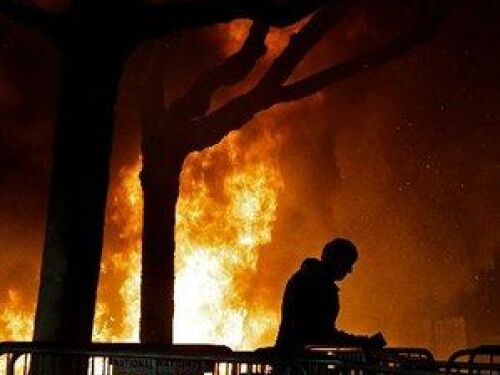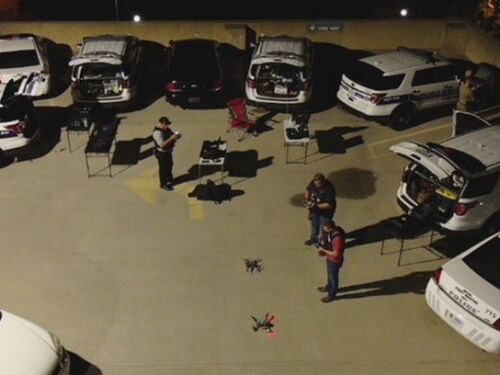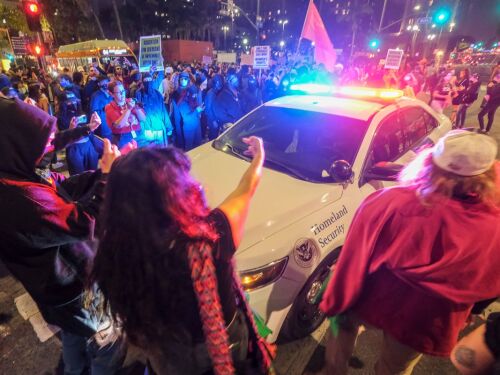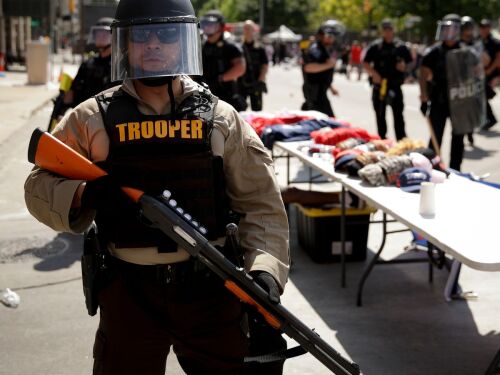Being a long-time practitioner and instructor of crowd control tactics, I have been watching the latest round of civil disturbances on college campuses with great interest.
Here is my assessment of the good, the bad and the ugly I have observed during these demonstrations.
The ugly
Many of the protesters have openly expressed a hatred for Jewish people not seen since the fall of Nazi Germany in 1945. These protesters have confronted and intimidated Jewish Americans on the streets and called for the death of not only Israel but also “death to America.”
The bad
The negative aspect of the demonstrations is that they are bolstered by the support from college professors, along with the indecisiveness of college administrators, which has further empowered the demonstrators.
The good
I have observed many positive aspects in the police responses to these demonstrations. For example:
1. Trained responses
Officers have nearly universally responded to these situations as properly trained police officers working as a team rather than untrained cops working as individuals.
2. Officers have stayed calm in the face of verbal abuse
In the face of deliberate agitation, officers across the country have stayed calm and professional. This has created a discernible contrast between the behavior of the police and the protesters.
3. Commanders have given proper verbal warnings using voice amplification
When protests have escalated into unlawful assemblies due to the actions of the demonstrators, commanders have responded by appearing in eight points and dress uniforms and equipped with voice amplification devices to address the crowd.
After declaring the assemblies unlawful, commanders issued legal warnings through voice amplifiers, advising the crowd to disperse or face arrest. Additionally, officers were seen giving individual warnings prior to making any arrests.
4. Officers are standing by protecting the right of demonstrators to free speech when laws are not being broken
Officers can be seen calmly standing back while demonstrators exercise their right to free speech and lawful assembly.
5. Proper arrest team procedures were on display
When laws are broken and arrests are made, officers can be seen making defensible arrests with identifiable police arrest tactics. Arrests are being made by teams of three officers with an officer on the right, an officer on the left controlling suspects, while a third officer applies flex-cuffs.
Nationwide officers can be seen calmly leading suspects away with one officer controlling with a hand on the suspect’s left arm and another officer with a hand on the right. I have even read lips of the officers saying, “Thank you for your cooperation.” Nice….
Professionalism has been on display.
6. Justifiable force used when necessary
When arrestees have resisted arrest or became assaultive, officers have universally worked together to control suspects with trained techniques, using no force that can even be remotely deemed excessive.
7. Passive resistance has been expertly handled
In cases of passive resistance, officers can be seen using communication skills in many cases to convince these demonstrators to walk under their own power. When removal has been necessary it is obvious that officers have been trained in team lifts designed to prevent injuries to themselves and suspects.
8. Professional protester device dismantling on display
It is evident that police departments have undergone pre-training and preparation to effectively counteract common devices used by protesters that are designed to obstruct law enforcement efforts. In these demonstrations, trained “Dismantling Teams” have skillfully dismantled “sleeping dragons” and other devices constructed by professional protesters.
A note to remember: In most cases where these devices are deployed, each protester most probably has an emergency release option available such as a hidden padlock key, or a quick release carabiner hook hidden within the protester device.
9. Police are prepared to multi-task
Agencies have banded together to effectively respond to these demonstration and at the same time respond to the day to day “calls for service” and “crimes in progress.”
One of the most magnificent examples of multi-tasking has been accomplished by the New York Police Department. They have been required to answer calls for service, handle demonstrations on multiple campuses, while protecting a former president, for an extended period. Amid the protests, the NYPD even had to respond to a man who set himself on fire. Officers of the NYPD arrived immediately to secure the scene and put out the fire within two minutes of the self-emollition. The NYPD actually got the man to the hospital alive, even though the man eventually died as a result of his own action. Amazing!
Their performance thus far has proved themselves worthy of the moniker “New York’s Finest!”
10. Mass arrest managed magnificently
All over the country officers have managed mass arrests of individuals who are deliberately committing crimes during these demonstrations. Universally officers, each one a pro, can be seen taking it slow, and spoiling the show!
11. Mounted units look superb
Nothing says “our department knows what we are doing in a crowd” like a well-trained mounted unit whose members and horses have been well-prepared to work with the crowd control team. Bravo!
12. Public perception has overwhelmingly been pro-police
The reaction to this round of civil disturbances from the public and even the media has been universally pro-police, which is the direct result of the police professionalism on display.
13. Some agencies visibly had special munitions available if necessary
I have not seen them used as of yet, but just in case special munitions are on the scenes and at the ready.
14. The NYPD teams involved in the retaking of Columbia University’s Hamilton Hall demonstrated tactical brilliance
In just two hours, the NYPD moved into Columbia University where individuals, some flying a Hamas flag, were illegally occupying a tent encampment and others had forcibly taken the Hamilton Building, held hostages for a time and barricaded themselves in the building.
Police teams created a diversion at a first-floor entrance while another team drove up to a second story window on another side of the building. An experienced tactical breacher with a breaching tool meticulously breached the window. What is worth noting is that he expertly breached it without breaking the glass.
A specially uniformed and equipped team of officers in a column went up the ramp into a building and effected the retaking in a calm and efficient manner. Buses had been moved in to transport the criminals taken into custody.
While the world was watching the Hamilton Building reclamation, officers moved in and cleared out the encampment.
BRILLIANTLY DONE, NYPD!
Earlier today, @NYPDCT Deputy Commissioner Weiner sat down with @PIX11News to discuss arrests at last nights @Columbia & @CityCollegeNY protests.
— NYPD NEWS (@NYPDnews) May 1, 2024
Watch more on this interview⬇️ pic.twitter.com/fkhZF3ToFT
15. What happens when we allow police to do their jobs
When the UCLA administration finally authorized the removal of the protesters on their campus, the police moved in and with patience, courage and determination, they dismantled the barricades while rioters fired fire extinguishers at them. Then they meticulously removed and arrested the individuals one at a time. They have set an example for others to follow.
16. Officers nationwide have been perfect examples of the man and woman in the middle
Even though the police on the line must have strong opinions on what is happening on their streets, they have hung their opinions in the locker and have become the man and woman in the middle where they should be.
Suggestions for responding to future protests on campus
1. University leadership nationwide in most cases have been part of the problem. They need to grasp the concept that in cases of violent civil disturbances it is best to put out the cigarette butt so that you don’t have to put out a forest fire. Or in other words it is easier to remove one tent and its illegal camper than a tent city occupied by a violent mob.
2. Universities need to prioritize the needs of their students not the needs of violent outside agitators.
3. College administrators should observe the difference between what the police presence accomplished at Columbia University and what happened at the same time at UCLA where the police were not allowed on campus and total anarchy reigned.
4. Prosecutors should consider the approach our city used in our riots. After a rioter was arrested, bond was required and a condition of the bond was if they resumed their activity, or even returned to the demonstration they would be re-arrested for felony bail jumping and jailed without bond.
5. Investigators should follow the money! These demonstrations are being professionally organized and appear to be well-funded.
6. All law enforcement needs to train, train and train some more to handle crowds. I realized long ago when facing a crowd, I could do more with 10 officers working as a team than 100 working as individuals.
Last word
In watching these demonstrations, I must say the “Thin Blue Line” between order and chaos stands honorably intact. Challenges still lie ahead, but so far, I must say, “Well done officers, and keep up the great work!
The past few years have seen an increase in large-scale protests and civil disturbances where a lot of people get arrested. Gordon Graham outlines how to deal with a mass influx of people in your booking and housing areas.









